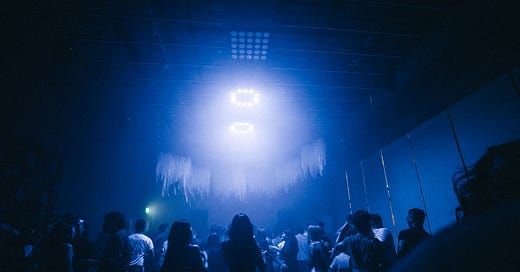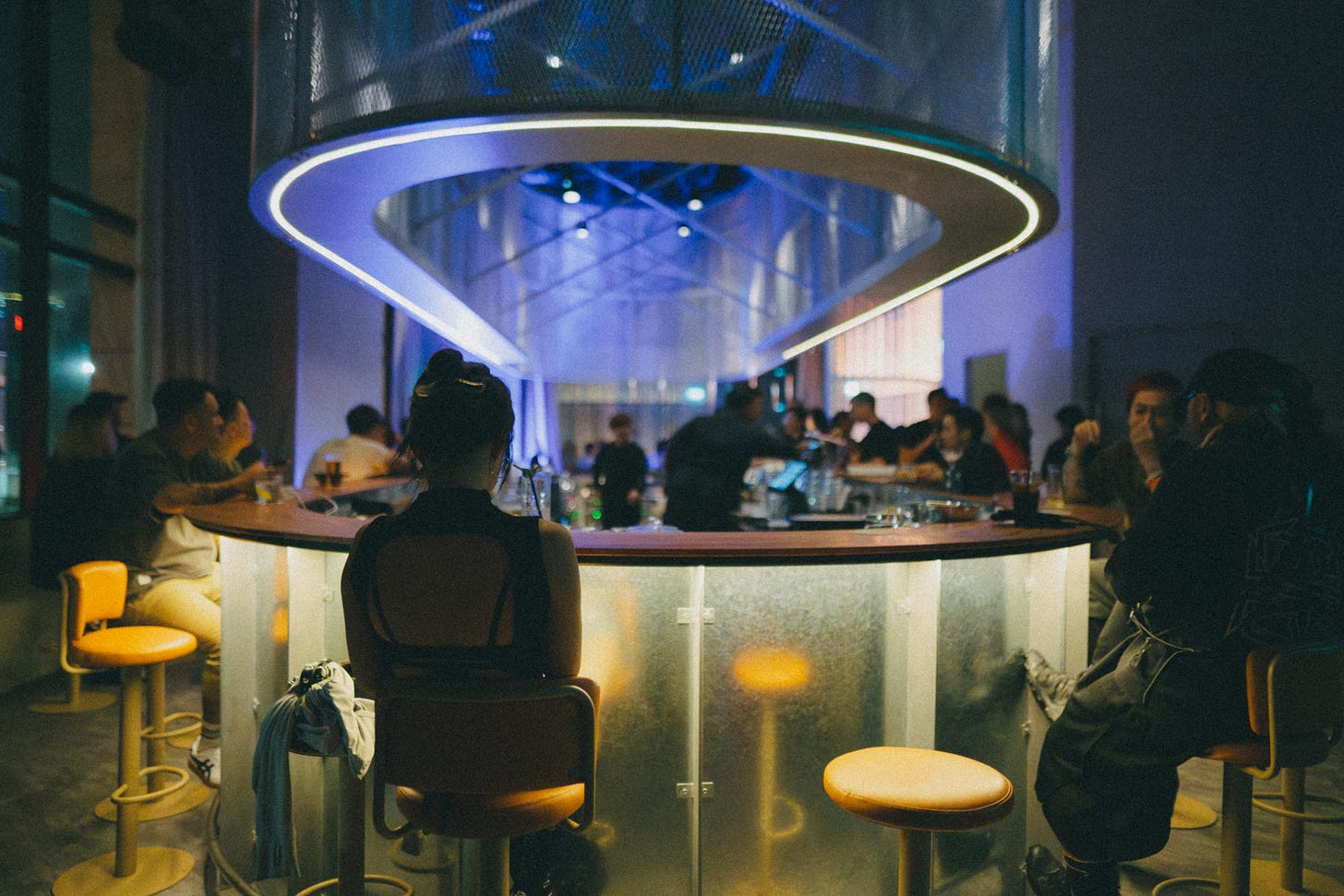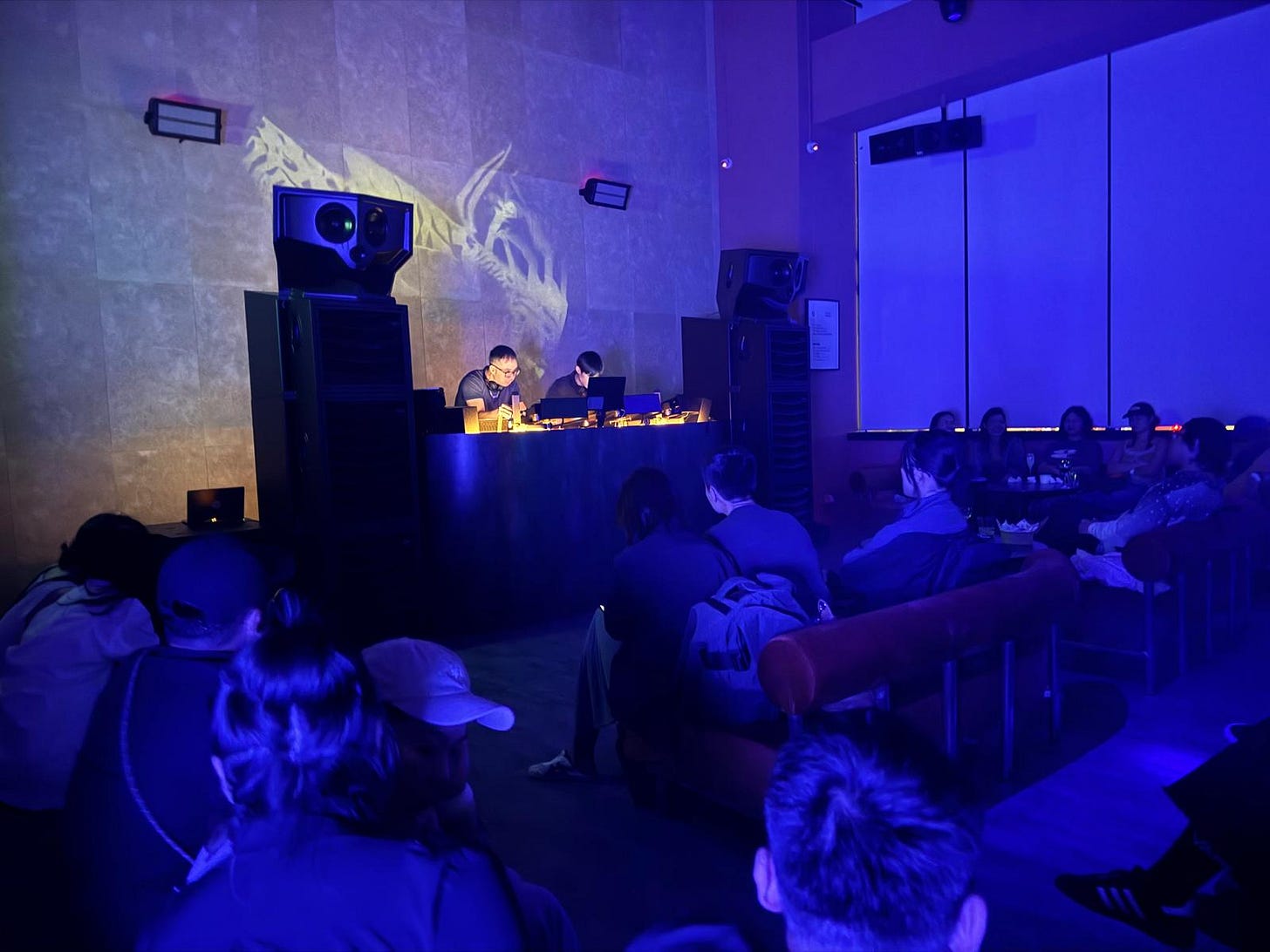CAN A NIGHTCLUB BE BOTH UNDERGROUND AND UPSCALE?
Singapore's new party playground Rasa aims to elevate Southeast Asian nightlife—but its "no fast techno" music policy has come under fire by some in the local scene
On a recent Sunday at twilight, I was lost in Singapore’s bustling business district, in search of a place to party. The city’s financial hub is one of the few neighborhoods where nightlife establishments are permitted to open late, so this was a familiar situation: many of my nights out here have begun by wandering around a maze of glossy skyscrapers and bank buildings, looking for signs of an alternative scene. This time, my destination was a club called Rasa that opened in January. I didn’t know much about the spot, but one of the co-founders was a local friend of mine named Kavan Spuyt, who’d recently moved back to Singapore from Berlin after working at Berghain’s music agency Ostgut Bookings.
The premise of a new underground club in Singapore was exciting; for as long as I can remember from growing up here, nightlife has been dominated by international clubbing franchises like Ministry of Sound and Marquee that cater to crazy rich Asians with Vegas-style pomp and European or American EDM DJs. Sure, there are still parties here with a distinctly local flavor, like Mambo Night at Singapore’s longest-running club Zouk, but bottle service still remained the status quo; Zouk was where my high school homies—the teenage sons and daughters of Chinese bank and Indonesian oil magnates—would flaunt their parents’ credit cards with $800 bottles of Grey Goose.
In contrast, Spuyt had described the club to Mixmag as a “love letter to our Southeast Asian roots,” and explained that its name, Rasa, is a Malay word meaning “taste” or “flavor.” These cultural references aligned the club with a new underground consciousness emerging in Asian nightlife—a nascent movement driven by parties and collectives that are more interested in local traditions and regional collaborations than pandering to the Western gaze. The question was how Rasa would fit into this fertile but fragile ecosystem, and whether it could survive in a city known for sky-high rents and hyperdrive capitalism.
The address in my phone led to a street corner where vibrations from the club were drowned out by the ear-splitting drill of a jackhammer on the street—the ubiquitous soundtrack of a land where urban development is happening at warp speed. Tilting my head up, I spotted a square-shaped neon sign of the club’s logo in the window, and the silhouettes of people lounging and laughing with friends. This is the place, I said to my partner. This is where it’s at.
Through a pair of sliding glass doors and up a flight of stairs, a door opened up to an oblong bar with a steel mesh lighting frame hanging from a tall ceiling. To the right was a lounge area with squiggle-shaped seats and cushy velvet booths facing wraparound glass windows, the city’s skyline winking in the horizon. To the left, past a towering revolving door, was a modestly-sized dancefloor flanked by more plush sofas and vertical stacks of TPI speakers. The fengshui of the club was pleasing, allowing for intuitive movement between the three spaces without soundbleed or bottlenecks. The abundance of seating was also godsend, since the designated area for chilling and conversing in nightclubs is usually relegated to the smoking section.
Later, I found out the club was the first Southeast Asia project of Studio Karhard, the design team behind Berghain and K41 (a techno club in Kyiv that a friend recently told me is the coolest place she’s ever played). Compared to those two industrial temples to hardcore hedonism, however, Rasa felt grown and sexy—more Buddha Bar than Berghain. With a menu offering yuzu sorbets and salted plum gin cocktails, it’s a place that speaks to the refined, and perhaps more conservative, tastes of the average Singaporean clubgoer’s luxury cosmopolitanism.
That night, the club was hosting an ambient listening session called pureblue, a collaboration between Singaporean artists Kin Leonn and Mervin Wong. The downtempo night, which started at the granny-approved hour of 5pm, was an experiment in slowing down the fast-paced intensity of typical nights out here. The abundance of comfy seating was perfect for the event, and a hundred people lounged around the velvet sofas, sipping jackfruit cocktails and listening in rapt attention to a rolling set of hazy atmospherics. (After I posted a video of the event on Instagram, a friend who throws ambient parties in New York commented: “It’s amazing—nobody is talking.”)
Over the rest of my monthlong stay in Singapore, I returned again and again to the club. The following Sunday, internet radio station Wild Pearl threw their weekly community night party in the lounge, while in the main room, party series Sivilian Affairs invited Barcelona’s Sampol to headline alongside veteran local acts like Ramesh. Then, in late March, the club agreed to host a spur-of-the-moment screening of a mini-documentary I made with some friends last year about the Singaporean queer rave Bussy Temple (more about this next time!).
Clearly, Rasa had become a home base of sorts for the local scene. But the longer I hung around the city’s nightlife circles, the more I started to hear rumbles of discontent from certain pockets of the community. The complaints were centered around the club’s alleged rules around what genres of music that DJs could and couldn’t play there, especially over the weekends. The club had gained a reputation as being anti-techno; house and disco were encouraged instead of harder and faster sounds, in order to appeal to a more mainstream crowd.
This was a tough sell to Singapore’s more radical party collectives, who favor the sounds of hard dance, techno and experimental club. These crews tend to be run by younger ravers who face many structural hurdles finding a home for their parties because of the lack of DIY venues in Singapore. (One party organizer told me that there is currently just one venue on the entire island, a Japanese restaurant by day, that is willing to let them throw raves.) Some of these folks felt ambivalent about what the club was shaping out to be, accusing it of a bait-and-switch by claiming to be a safe haven for the underground, but turning out to be yet another playground for the rich.
During my final days in Singapore before I returned to LA, I approached Spuyt for an interview. I told him the criticism I’d heard about Rasa, and told him I felt conflicted...
Keep reading with a 7-day free trial
Subscribe to Rave New World to keep reading this post and get 7 days of free access to the full post archives.






